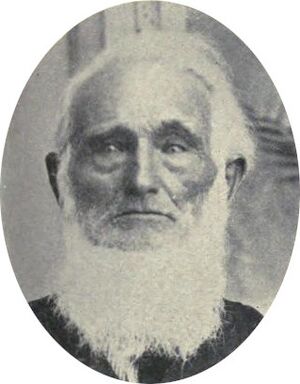Duncan's Retreat, Utah facts for kids
Quick facts for kids
Duncan's Retreat
|
|
|---|---|

One of many pear trees at the abandoned village, 30 August 1929
|
|
| Country | United States |
| State | Utah |
| County | Washington |
| Established | 1861 |
| Abandoned | c.1895 |
| Named for | Chapman Duncan |
Duncan's Retreat is a fascinating ghost town in southwestern Utah, United States. It's located in Washington County, not far from Zion National Park. This old settlement was home to people between 1861 and about 1895. Today, it's a quiet place, a reminder of early pioneer life.
Contents
A Town's Beginning
In 1861, a man named Chapman Duncan and a few other settlers arrived here. They built their homes near Mukuntuweap Creek, a small stream that flows into the Virgin River. These pioneers were part of a plan by Brigham Young to grow cotton in southern Utah. This area was even called "Utah's Dixie" because of its warm climate, good for cotton.
The Great Flood of 1862
Life near the Virgin River was tough. The river was very unpredictable. In the winter of 1862, a huge flood hit. It destroyed most of the new settlement. Other nearby towns, like Grafton, also suffered.
Chapman Duncan and many others decided to leave after the flood. They looked for a safer place to live. The families who chose to stay behind named their village Duncan's Retreat. It was a way to remember that Chapman Duncan had "retreated" from the area.
A Funny Story About Duncan
There's a local legend about why Chapman Duncan really left. The story says he was supposed to plan a canal to bring water from the Virgin River. But when the canal was dug, it went uphill! This made it useless for carrying water. Another version of the story says this happened in Virgin, and Duncan then "retreated" to the place that became Duncan's Retreat.
Life in Duncan's Retreat
Even after the flood, more settlers arrived. By the end of 1862, about 70 people lived in Duncan's Retreat. They worked hard to plant crops and orchards. When the river didn't flood, they had great harvests. Cotton, corn, wheat, and sorghum grew very well here.
In 1863, the town got its own post office. A schoolhouse was built in 1864, so children could learn.
Moving for Safety
In 1866, during the Black Hawk War, people worried about attacks from Native American groups. The town was evacuated, and residents moved to nearby Virgin for safety. However, farmers still returned to Duncan's Retreat every day to work their fields. By 1868, everyone moved back permanently.
The Town's End
Farming in Duncan's Retreat was always a challenge. The soil was rich, and good years brought huge crops. But a sudden flood could wash everything away. Life was very difficult for the families living there.
Between 1870 and 1880, most families stayed. But the next ten years were much harder. By 1891, almost everyone had left Duncan's Retreat. The last known birth in the town was in 1895. After that, the town became a ghost town.
Today, all that's left of Duncan's Retreat are a few old fruit trees, an irrigation ditch, and some graves. You can find these remnants on the north side of Utah State Route 9, between the towns of Virgin and Grafton.




